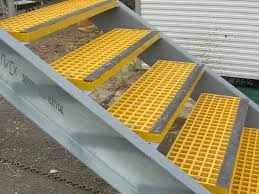
-
 Afrikaans
Afrikaans -
 Albanian
Albanian -
 Amharic
Amharic -
 Arabic
Arabic -
 Armenian
Armenian -
 Azerbaijani
Azerbaijani -
 Basque
Basque -
 Belarusian
Belarusian -
 Bengali
Bengali -
 Bosnian
Bosnian -
 Bulgarian
Bulgarian -
 Catalan
Catalan -
 Cebuano
Cebuano -
 China
China -
 China (Taiwan)
China (Taiwan) -
 Corsican
Corsican -
 Croatian
Croatian -
 Czech
Czech -
 Danish
Danish -
 Dutch
Dutch -
 English
English -
 Esperanto
Esperanto -
 Estonian
Estonian -
 Finnish
Finnish -
 French
French -
 Frisian
Frisian -
 Galician
Galician -
 Georgian
Georgian -
 German
German -
 Greek
Greek -
 Gujarati
Gujarati -
 Haitian Creole
Haitian Creole -
 hausa
hausa -
 hawaiian
hawaiian -
 Hebrew
Hebrew -
 Hindi
Hindi -
 Miao
Miao -
 Hungarian
Hungarian -
 Icelandic
Icelandic -
 igbo
igbo -
 Indonesian
Indonesian -
 irish
irish -
 Italian
Italian -
 Japanese
Japanese -
 Javanese
Javanese -
 Kannada
Kannada -
 kazakh
kazakh -
 Khmer
Khmer -
 Rwandese
Rwandese -
 Korean
Korean -
 Kurdish
Kurdish -
 Kyrgyz
Kyrgyz -
 Lao
Lao -
 Latin
Latin -
 Latvian
Latvian -
 Lithuanian
Lithuanian -
 Luxembourgish
Luxembourgish -
 Macedonian
Macedonian -
 Malgashi
Malgashi -
 Malay
Malay -
 Malayalam
Malayalam -
 Maltese
Maltese -
 Maori
Maori -
 Marathi
Marathi -
 Mongolian
Mongolian -
 Myanmar
Myanmar -
 Nepali
Nepali -
 Norwegian
Norwegian -
 Norwegian
Norwegian -
 Occitan
Occitan -
 Pashto
Pashto -
 Persian
Persian -
 Polish
Polish -
 Portuguese
Portuguese -
 Punjabi
Punjabi -
 Romanian
Romanian -
 Russian
Russian -
 Samoan
Samoan -
 Scottish Gaelic
Scottish Gaelic -
 Serbian
Serbian -
 Sesotho
Sesotho -
 Shona
Shona -
 Sindhi
Sindhi -
 Sinhala
Sinhala -
 Slovak
Slovak -
 Slovenian
Slovenian -
 Somali
Somali -
 Spanish
Spanish -
 Sundanese
Sundanese -
 Swahili
Swahili -
 Swedish
Swedish -
 Tagalog
Tagalog -
 Tajik
Tajik -
 Tamil
Tamil -
 Tatar
Tatar -
 Telugu
Telugu -
 Thai
Thai -
 Turkish
Turkish -
 Turkmen
Turkmen -
 Ukrainian
Ukrainian -
 Urdu
Urdu -
 Uighur
Uighur -
 Uzbek
Uzbek -
 Vietnamese
Vietnamese -
 Welsh
Welsh -
 Bantu
Bantu -
 Yiddish
Yiddish -
 Yoruba
Yoruba -
 Zulu
Zulu
Exploring the Latest Innovations and Trends in GRP Duct Technology and Applications
Understanding GRP Ducts and Their Role in Modern Engineering
In the modern world of engineering and construction, the choice of materials plays a crucial role in the efficiency, sustainability, and functionality of various systems. One of the innovative materials that have gained prominence in recent years is Glass Reinforced Plastic (GRP), particularly in the context of ductwork. GRP ducts have become a preferred option for many industries due to their many advantages over traditional materials.
What is GRP?
Glass Reinforced Plastic, commonly known as fiberglass, is a composite material made up of a polymer matrix reinforced with glass fibers. This combination bestows GRP with excellent strength-to-weight ratios, making it both lightweight and durable. The inherent properties of GRP make it highly resistant to corrosion, moisture, and chemical exposure, factors that are critical in many industrial applications.
The Advantages of GRP Ducts
One of the primary reasons for the increasing popularity of GRP ducts is their exceptional durability. Unlike metal ducts, which can rust or corrode over time, GRP ducts maintain their integrity even in challenging environments. This characteristic reduces maintenance costs significantly and prolongs the overall lifespan of the ducting system.
Moreover, GRP ducts are incredibly lightweight compared to traditional materials like metal or concrete. This reduces the structural load on buildings and simplifies the installation process. The ease of handling leads to lower labor costs and minimizes the time required for installation, promoting greater efficiency in project timelines.
Thermal efficiency is another compelling reason to consider GRP ducts. The material has excellent insulating properties, which help maintain the desired temperature in HVAC systems. This insulation capability not only enhances energy efficiency but also contributes to lower energy bills—a critical aspect for businesses looking to reduce operating costs.
grp duct

Applications of GRP Ducts
GRP ducts are increasingly being utilized in various sectors, including commercial, industrial, and residential applications. In the HVAC industry, they are used for air distribution systems where efficient air flow and minimal temperature loss are essential. Their lightweight nature makes them particularly appealing for high-rise buildings, where materials must be carefully weighed against structural capabilities.
In chemical processing and waste management, GRP ducts are favored for their ability to withstand corrosive substances. Industries handling harsh chemicals or waste products find GRP ducting solutions to be both practical and safe. Additionally, their non-reactive nature ensures that there is no interference with the chemical processes involved, maintaining product integrity.
Environmental Considerations
With a growing emphasis on sustainability, GRP ducts offer a more eco-friendly alternative. The production process of GRP can be optimized to reduce waste and energy consumption. Furthermore, their longevity means that fewer resources are needed for maintenance and replacement over time. As businesses and industries aim to reduce their carbon footprint, GRP ducts present a viable solution.
Conclusion
In conclusion, GRP ducts represent a significant advancement in ductwork technology, offering a multitude of benefits that make them suitable for a wide range of applications. Their durability, lightweight nature, thermal efficiency, and environmental advantages position them as a material of choice in modern engineering and construction. As industries continue to pursue innovative solutions to meet their infrastructure needs, GRP ducts are likely to play an increasingly crucial role in creating efficient, sustainable, and functional environments. Whether used in HVAC systems or chemical processing facilities, GRP technology stands as a testament to the progress being made in composite materials and engineering practices.
Latest news
-
Oblate Tanks: Space-Saving, Durable Liquid Storage SolutionsNewsAug.27,2025
-
High-Performance Piping System Solutions for Industry & Commercial UseNewsAug.26,2025
-
Precision Fittings: Durable & Reliable Industrial & Plumbing SolutionsNewsAug.25,2025
-
Practical Steps: Unlock Success with Our Proven GuidesNewsAug.24,2025
-
Transport Tanks: Safe, Durable & Efficient Liquid HaulingNewsAug.23,2025
-
High-Quality Piping Systems for Efficient Flow & DurabilityNewsAug.22,2025









